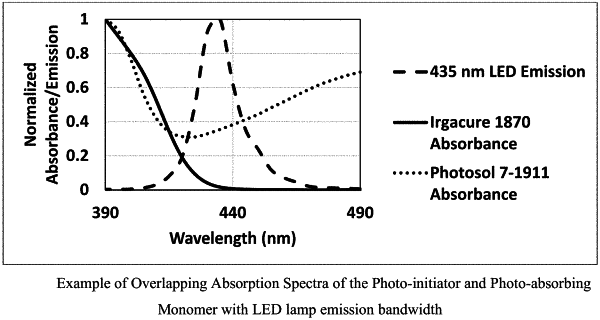| CPC B29D 11/00038 (2013.01) [B29D 11/00634 (2013.01); G02C 7/028 (2013.01); G02C 7/04 (2013.01); G02C 7/10 (2013.01); H05B 45/12 (2020.01); B29K 2033/12 (2013.01); B29K 2033/26 (2013.01); B29K 2083/00 (2013.01); B29K 2105/0002 (2013.01); B29K 2995/0018 (2013.01)] | 8 Claims |

|
1. A method for manufacturing a photoabsorbing contact lens, the method comprising:
(a) providing a mold assembly comprised of a base curve and a front curve, the base curve and the front curve defining and enclosing a cavity therebetween, the cavity containing a reactive mixture, wherein the reactive mixture comprises at least one polymerizable monomer, a photoinitiator which absorbs at an activating wavelength, and a photoabsorbing compound which displays absorption at the activating wavelength; and
(b) curing the reactive mixture to form the photoabsorbing contact lens by exposing the reactive mixture to radiation that includes the activating wavelength, wherein the radiation is directed at both the base curve and the front curve of the mold assembly, and wherein the radiation has an intensity at the base curve that is less than 350 percent greater than the radiation's intensity at the front curve.
|